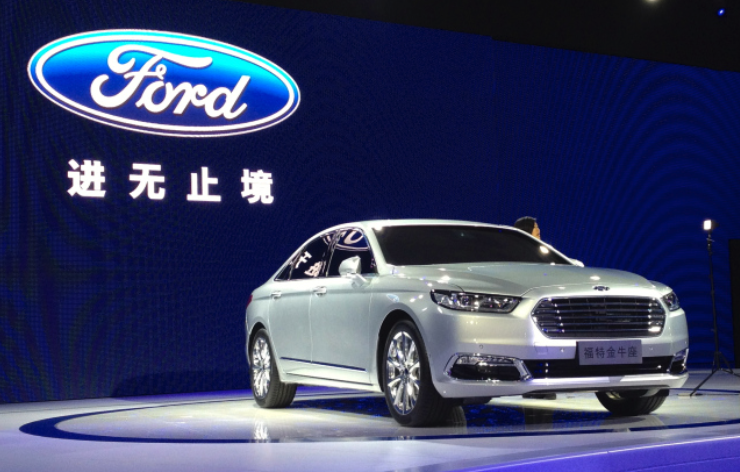Trends: Why automakers have Chinese buyers in mind

Story and photo by John LeBlanc
At this year’s New York Auto Show, Ford rolled out a concept for its new Continental, a flagship luxury sedan set to go on sale next year. And without hesitation, Ford officials made it clear that, yes, they would be quite happy if they sold a few Continentals in North America. But really, the big, roomy and comfortable luxury sedan was designed primarily for the Chinese buyer in mind.
If you are shocked by this news, you shouldn’t be. Long gone are the days when North American, European and Japanese car buyers influenced global car design. The trend today is what Chinese new car buyers want, Chinese new car buyers get.
In the second half of the 20th century, Western (and primarily American) new car buyers set the pace for global auto design. Automakers created their new cars and trucks with the U.S. buyer first and foremost in mind. But the combination of massive economic expansion in China (and other emerging markets like Brazil, Russia and India) with relatively flat Western economies of the early 21st century has seen the trend of automakers from around the world turning their designers away from Western customers and looking to the Far East with growing sales as the objective.
China has been the world’s largest producer of new cars and trucks since 2008, surpassing Japan, the European Union and the United States, combined. As well, more new cars and trucks are sold in China than anywhere else in the world. The China Association of Automobile Manufacturers predicts passenger-vehicle sales to rise 8% to 21.3 million vehicles for 2015; a pace far stronger than current outlooks for Europe and North America.
It’s no surprise then that Western automakers have taken advantage of the Chinese market’s explosive growth by either selling their vehicles to import brand-hungry Chinese car buyers or manufacturing in-market, partnering with local automakers. The trend has seen many of the new cars we buy here in Canada — from Buicks to Fords to Porsches to Volkswagens — being designed for the Chinese buyer.
Two great examples of Western automakers that have made the Chinese buyer a design priority is General Motors and Volkswagen Group, each battling annually for sales leadership among foreign manufacturers in China.
While GM sells Chevrolets and Cadillacs in China, local buyers can’t get enough Buicks.
When GM reintroduced Buick to China in 1999 (selling Buicks in China isn’t exactly a new idea — Buick says China’s last emperor, Up Yi, had a Buick in the 1920s, and in pre-Second World War China, one in five cars was a Buick), the brand was marketed to senior executives and other elites, priced above Mercedes-Benz and BMW. Since 2006, Buick has sold more vehicles in China than in its American home market. So while the Buick LaCrosse sedan may seem like a typical American luxury four-door, its generous rear-seat legroom and flashy chrome details were driven by the tastes of buyers in Beijing, not Boston.
With China as Buick’s biggest market in the world, it’s no surprise to see the brand’s design direction come from its Asian studios. Like the Canadian-market Verano and LaCrosse sedans, the recent Buick Avenir Concept from the 2015 Detroit auto show was designed with Asian buyers in mind, this time at GM’s Australian design facility.
Since it started partnering with local automakers in 1978, Germany’s Volkswagen Group has aggressively taken advantage of the exploding Chinese market. And many of its cars and trucks were designed for the Chinese buyer first.
If the idea of a four-door Porsche sedan seemed foreign when the Panamera made its world debut at the 2009 Shanghai show, that’s because the big Porsche was created primarily for the Chinese buyer, who until then, was being chauffeured in their cramped Porsche 911.
“It’s no coincidence we’re debuting the Panamera here in Shanghai,” said Klaus Berning, head of Porsche sales and marketing worldwide at the time.
While China continues to be the Panamera’s largest market, lesser VW Group products have made their way to Canadian showrooms.
Both the current compact VW Jetta and midsized Passat sedans were designed for the Chinese market. China is also the VW Group Audi brand’s biggest market. So while the new A3 Sedan went on sale in Canada in late 2014, it had already been on sale in China a year before.
Acting as mini-limousines, long-wheelbase sedans have been a staple in the Chinese market for years. And Canadian-market cars like the BMW 3 Series Gran Turismo and Infiniti Q70L are direct results of that influence. As well, Chinese buyers are very fond of the coupe/SUVs and have driven the demand for the likes of the BMW X4 and X6 Sports Activity Coupes and forthcoming Mercedes-Benz GLE and GLC Coupes.
So will Chinese new car buyers still drive global car design trends in the future? Based on what we saw debut at this year’s Shanghai Motor Show, the answer to that question is a solid “yes.”





![[del.icio.us]](https://www.straight-six.com/wp-content/plugins/bookmarkify/delicious.png)
![[Digg]](https://www.straight-six.com/wp-content/plugins/bookmarkify/digg.png)
![[Facebook]](https://www.straight-six.com/wp-content/plugins/bookmarkify/facebook.png)
![[Google]](https://www.straight-six.com/wp-content/plugins/bookmarkify/google.png)
![[Reddit]](https://www.straight-six.com/wp-content/plugins/bookmarkify/reddit.png)
![[StumbleUpon]](https://www.straight-six.com/wp-content/plugins/bookmarkify/stumbleupon.png)
![[Twitter]](https://www.straight-six.com/wp-content/plugins/bookmarkify/twitter.png)
![[Email]](https://www.straight-six.com/wp-content/plugins/bookmarkify/email.png)